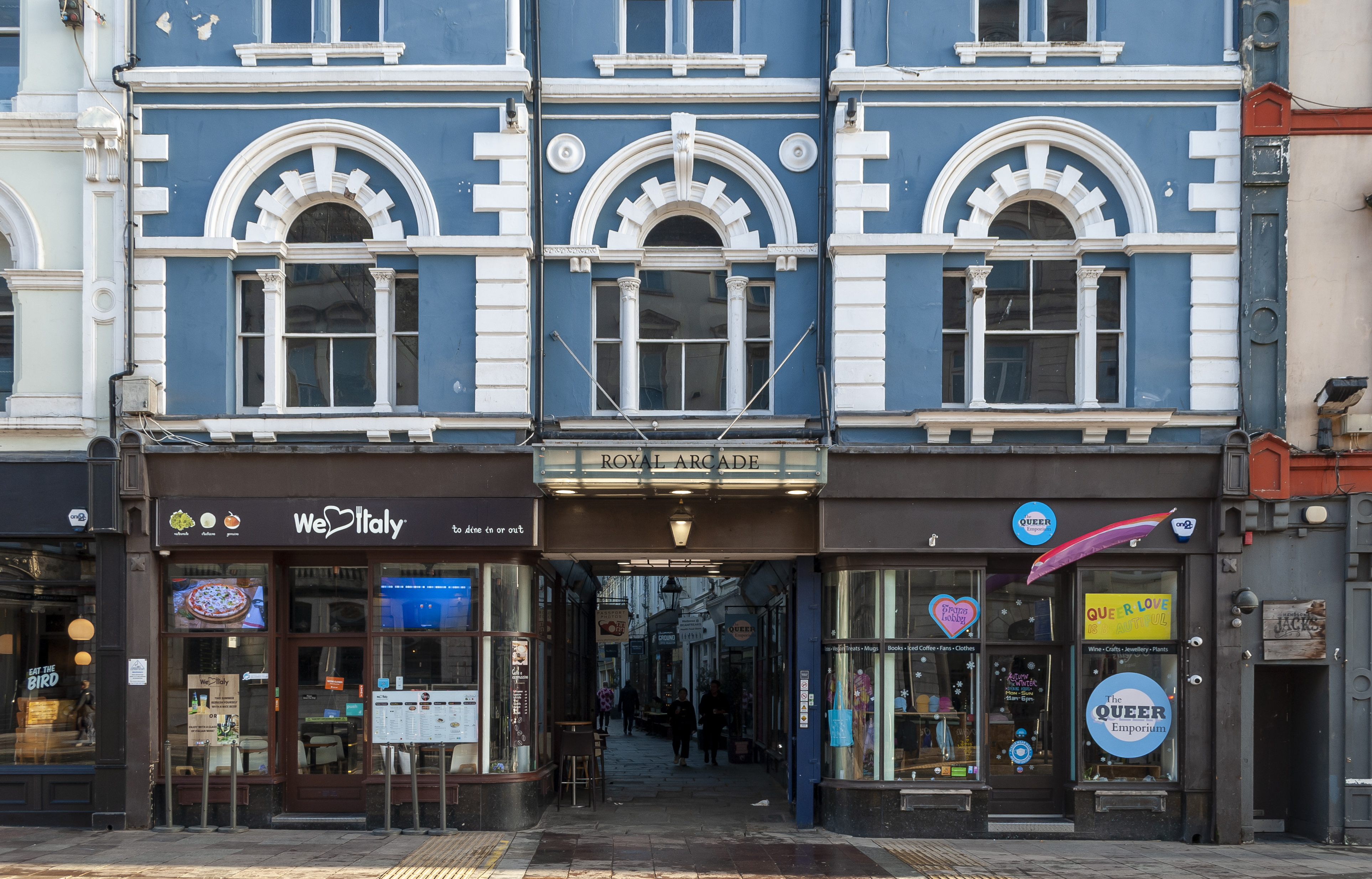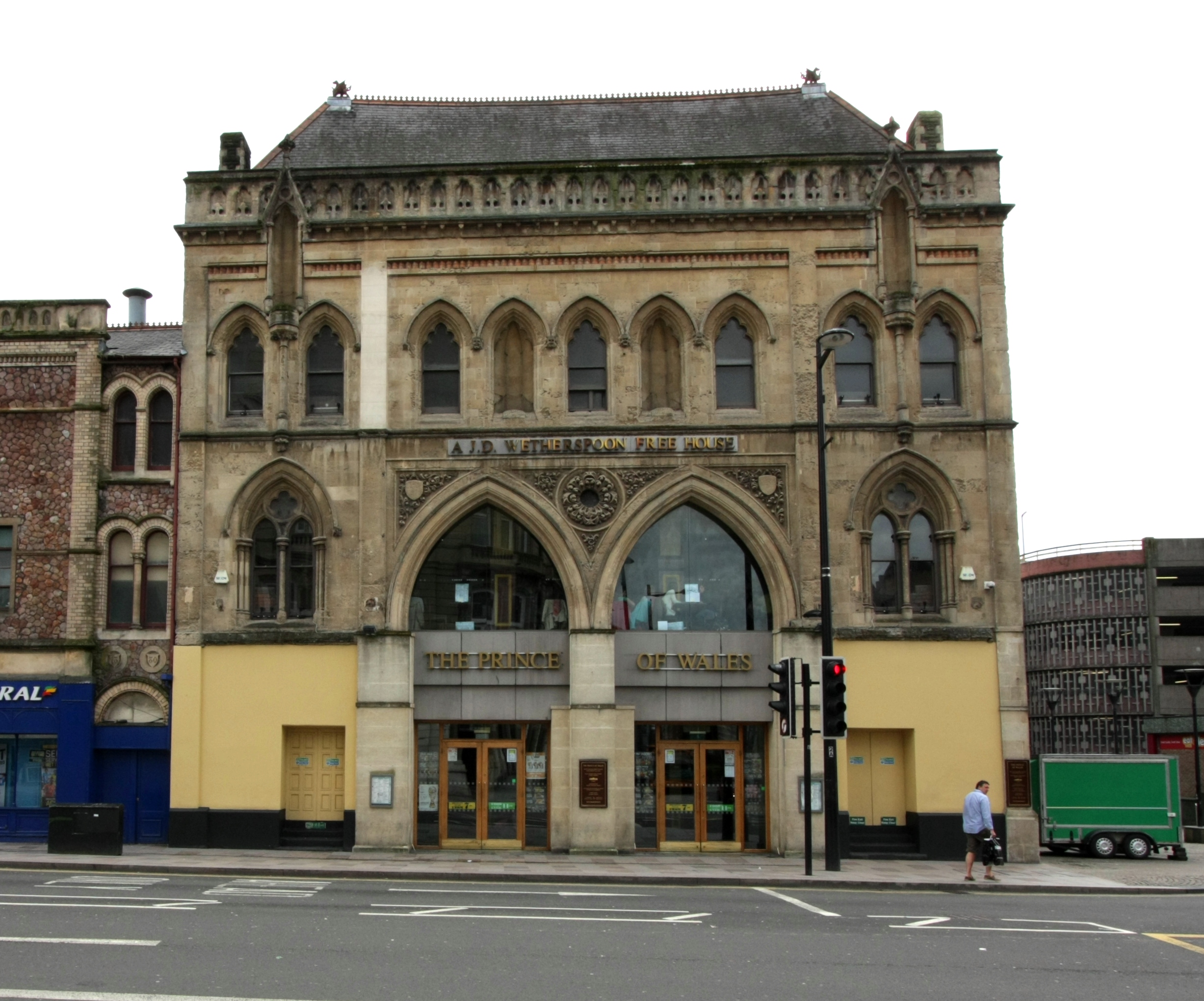|
St. Mary's Street, Cardiff
St Mary Street ( cy, Heol Eglwys Fair) and High Street ( cy, Heol Fawr) are major commercial streets in the Castle Quarter of Cardiff city centre, Wales, which form a major thoroughfare running south from the gatehouse of Cardiff Castle. High Street begins at the junction of Castle Street on the A4161 and ends at the junction of Church Street and Quay Street, from where St Mary Street begins until the roundabout at Callaghan Square on the A4160. In the 21st century, the thoroughfare has become the location for a wide variety of pubs, bars, restaurants, cafes and coffeeshops. Notable buildings past and present Present buildings * House of Fraser, formerly Howells department store * Cardiff Market * Hodge House * Prince of Wales Theatre (now a pub) * High Street Arcade * Morgan Arcade * Royal Arcade * Royal Hotel Former buildings * Cardiff Town Hall, demolished * Cardiff Gaol, demolished to make way for Cardiff Market * The first Cardiff Free Library was located abov ... [...More Info...] [...Related Items...] OR: [Wikipedia] [Google] [Baidu] |
Castle Quarter (Cardiff)
Castle Quarter ( cy, Cwr y Castell) is an independent retail destination area in the north of the city centre of Cardiff, Wales. Castle is also a community (parish) of Cardiff. The listed Castle Quarter includes some of Cardiff's Victorian and Edwardian arcades: Castle Arcade, High Street Arcade and Duke Street Arcade, and principal shopping streets: St Mary Street, High Street, Castle Street and Duke Street. Development of the area by Cardiff Council began in February 2010 aiming to create the Castle Quarter, particularly High Street and St Mary Street, into a pedestrian friendly environment to enhance the city centre. History of the principal streets The modern Castle Quarter is generally defined as the part of the city centre closest to Cardiff Castle, including the Castle Arcade, High Street Arcade and Duke Street Arcades, High Street and St Mary Street, Castle Street/Duke Street and Westgate Street.Chris Kelsey (12 May 2015"Historic Cardiff arcades to be returned to th ... [...More Info...] [...Related Items...] OR: [Wikipedia] [Google] [Baidu] |
Morgan Arcade
The Morgan Arcade is a shopping arcade in Cardiff, South Wales. Started in 1896, it was built to connect the main entrance of David Morgan's department store on St Mary's Street, with his other store on The Hayes. It opened in 1899 as the New Central Arcade, running east/west from the Hayes to St. Mary's Street. After Morgans bought the Royal Arcade, the family formed a holding company called the Cardiff Arcade Company, which owned and operated both the Royal and renamed Morgan arcades, which both ran underneath the store. After the agreed closure of David Morgan's, the property assets inside the various holdings companies were sold in late 2004 for £25 million to property firm Helical Bar. David Morgan Limited, Deymel Investments Limited and the Cardiff Arcade Company Limited are now all in liquidation. Between 2007 and 2008 the whole site was refurbished by Helical Bar, with the arcades restored. The companies spent £30M on restoring both the Morgan and Royal arcades, ... [...More Info...] [...Related Items...] OR: [Wikipedia] [Google] [Baidu] |
Shopping Streets In Wales
Shopping is an activity in which a customer browses the available goods or services presented by one or more retailers with the potential intent to purchase a suitable selection of them. A typology of shopper types has been developed by scholars which identifies one group of shoppers as recreational shoppers, that is, those who enjoy shopping and view it as a leisure activity.Jones, C. and Spang, R., "Sans Culottes, Sans Café, Sans Tabac: Shifting Realms of Luxury and Necessity in Eighteenth-Century France," Chapter 2 in ''Consumers and Luxury: Consumer Culture in Europe, 1650-1850'' Berg, M. and Clifford, H., Manchester University Press, 1999; Berg, M., "New Commodities, Luxuries and Their Consumers in Nineteenth-Century England," Chapter 3 in ''Consumers and Luxury: Consumer Culture in Europe, 1650-1850'' Berg, M. and Clifford, H., Manchester University Press, 1999 Online shopping has become a major disruptor in the retail industry as consumers can now search for product ... [...More Info...] [...Related Items...] OR: [Wikipedia] [Google] [Baidu] |
Pierhead Building
The Pierhead Building ( cy, Adeilad y Pierhead) is a Grade I listed building in Cardiff Bay, Wales. One of Cardiff's most familiar landmarks, it was built in 1897 as the headquarters for the Bute Dock Company. The Pierhead Building is part of the estate of the Senedd (Welsh Parliament; ), which also includes the Senedd building and Tŷ Hywel. The clock on the building is unofficially known as the "Baby Big Ben" or the "Big Ben of Wales". History The building was built in 1897 and designed by the English architect William Frame. It was a replacement for the headquarters of the Bute Dock Company which burnt down in 1892. Frame's mentor was William Burges, with whom he worked on the rebuilding of Cardiff Castle and Castell Coch until Burges's death in 1881. The Bute Dock Company was renamed the Cardiff Railway Company in 1897. A coat of arms on the building's façade bears the company's motto "" ("by water and fire"), encapsulating the elements creating the steam power which t ... [...More Info...] [...Related Items...] OR: [Wikipedia] [Google] [Baidu] |
Statue Of The Second Marquess Of Bute
A statue of the Second Marquess of Bute stands in Callaghan Square, Cardiff, Wales in recognition of John Crichton-Stuart (1793 – 1848) who developed Cardiff Docks. The statue was originally unveiled in 1853. It was designed by J. Evan Thomas. The statue became Grade II listed in 1975. Background Crichton-Stuart inherited the Scottish and Welsh Bute estates following the death of his grandfather, in 1814. He became Lord Lieutenant of Glamorgan. He was responsible for the early commercial and industrical development of Cardiff, with the Bute West Dock being opened in his lifetime, on 5 October 1839. He died suddenly in Cardiff, on 18 March 1848. Statue Following the death of the Marquess, a public meeting was held on 1 May 1848, which appointed a committee to arrange the creation of "a colossal statue" in his memory. It was expected to cost £2000. The statue was designed by Welsh sculptor, J. Evan Thomas, who exhibited the statue at the London 1851 Great Exhibition, ... [...More Info...] [...Related Items...] OR: [Wikipedia] [Google] [Baidu] |
Cardiff Central Library
Cardiff Central Library (now Cardiff Central Library Hub) ( cy, Llyfrgell Ganolog Caerdydd) is the main library in the city centre of Cardiff, Wales. It offers a public library service and is open six days a week. Four buildings have been named as such, with the newest building opening on 14 March 2009 and officially being opened a few months later on 18 June 2009 by the Manic Street Preachers. The first Cardiff library was opened in 1861 as the Cardiff Free Library, later expanded and known as the Cardiff Free Library, Museum and Schools for Science and Art. History Cardiff Free Library (1861 to 1882) In 1861, a free library was set up by voluntary subscription above the St Mary Street entrance to the Royal Arcade in Cardiff. By 1862, the Public Libraries Act of 1855 allowed local councils with 5,000 inhabitants or more to raise a rate of one penny in the pound to provide a public library. Cardiff was the first town in Wales to establish a public library. Two years later ... [...More Info...] [...Related Items...] OR: [Wikipedia] [Google] [Baidu] |
Cardiff Gaol
Cardiff Gaol was a prison located on St. Mary Street, Cardiff, Wales. Prior to its construction, people were imprisoned in Cardiff Castle. Background Cardiff's original court and gaol were located within the walls of Cardiff Castle Cardiff Castle ( cy, Castell Caerdydd) is a medieval castle and Victorian Gothic revival mansion located in the city centre of Cardiff, Wales. The original motte and bailey castle was built in the late 11th century by Norman invaders on top .... Whilst the court moved within the castle walls, the gaol was always located within the Black Tower. The earliest surviving gaol record is a Gaol Calendar from 1542, at which time the castle was still used.John Hobson Matthews (ed.)'Glamorgan Calendar Rolls and Gaol Files: Introduction' Cardiff Records: volume 2 (1900), pp. 142-151. Retrieved on ''British History Online'' 30 March 2013. After the Town Hall was built in the High Street in 1331, its main space included a court room, which resulted in ... [...More Info...] [...Related Items...] OR: [Wikipedia] [Google] [Baidu] |
Culturenet Cymru
Culturenet Cymru Ltd. is funded by the Welsh Assembly Government and is based at The National Library of Wales in Aberystwyth. Retrieved 13 October 2008 Its brief is to work in conjunction with both its members and community groups to develop a range of exciting and innovative projects. Its aim is to use online resources to increase awareness of, and improve access for all to, the culture and history of . Culturenet Cymru projects include: * 100 Welsh Heroes
100 Welsh Heroes was an ...
[...More Info...] [...Related Items...] OR: [Wikipedia] [Google] [Baidu] |
Cardiff Town Hall
Cardiff Town Hall was the name given to four buildings which successively served as the centre of local government in Cardiff, the capital of Wales between the Middle Ages and Cardiff's elevation from ''town'' to ''city'' status in 1905. Upon the rise to the title ''city'', the fourth and last town hall was replaced by Cardiff City Hall in 1906. None of the old town halls survive. Gild Hall In the early days of Cardiff's existence, the local government would have been centred in Cardiff Castle, but as the settlement expanded, it was necessary to have purpose-built premises and Cardiff's first ''gild hall'' (a variant spelling of guild hall, sometimes referred to as Cardiff's first town hall) was subsequently built. Very little is known of this structure, which was in use until the fourteenth century. Medieval town hall The gild hall was replaced by the second town hall in the 1330s. This structure, sometimes called the ''town house'', was built on land allocated by a charter of ... [...More Info...] [...Related Items...] OR: [Wikipedia] [Google] [Baidu] |
Royal Hotel, Cardiff
The Royal Hotel is a Grade II listed hotel on a prominent corner of St Mary Street/Wood Street in the centre of Cardiff, Wales. It is Cardiff's oldest grand hotel. History and description The hotel, by C. E. Bernard, was built between 1864 and 1866. An opening dinner was held on 3 July 1866 attended by 60–70 influential local residents. The Royal Hotel was initially run by a Mr and Mrs Sprawson. At the time of its construction there was another Royal Hotel in Cardiff, known as the Old Royal Hotel and located in The Hayes. The new 1860s building was four storeys high (plus an attic) in an Italianate style. In 1890 an additional storey plus an attic were added to the corner of the building. This increased the number of bedrooms from 70 to 120, with a modern lift and servants rooms on floor six. On the first floor was a banqueting room to seat up to 400 diners. Captain Scott's farewell dinner On 13 June 1910, two days before Robert Falcon Scott's ship departed from Cardiff for ... [...More Info...] [...Related Items...] OR: [Wikipedia] [Google] [Baidu] |
Royal Arcade, Cardiff
The Royal Arcade is a shopping arcade in Cardiff, South Wales. The Royal Arcade is the oldest arcade in Cardiff, being built in 1858, it is a Grade II listed building. In 1861, a free library was set up by voluntary subscription above the St Mary Street entrance to the Royal Arcade in Cardiff. Before the end of the 19th century the Cardiff School of art was using rooms above the arcade with students such as J. M. Staniforth and Goscombe John attending. Running east/west from The Hayes to St Mary's Street, parallel but to the south of the Morgan Arcade, it also runs under David Morgan's department store. After Morgans bought the Royal Arcade, the family formed a holding company called the Cardiff Arcade Company, which owned and operated both the Royal and the Morgan arcades. After the agreed closure of David Morgan's, the property assets inside the various holdings companies were sold in late 2004 for £25 million to property firm Helical Bar. David Morgan Limited, Deymel ... [...More Info...] [...Related Items...] OR: [Wikipedia] [Google] [Baidu] |
Prince Of Wales Theatre, Cardiff
The Prince of Wales Theatre is a former theatre in central Cardiff. Built in 1878, seating 2,800, it later became a sex cinema. It is now a pub. The building is located near Cardiff Central railway station, near the corner of St Mary Street and Wood Street, with entrances and façades on both streets. Architecture The theatre was built in 1878 to a Venetian Gothic design by the architects W. D. Blessley and T. Waring, during a period when Cardiff, then a prosperous coal-exporting port, was rapidly expanding. The building was a prompt replacement of Cardiff's old Theatre Royal in Queen Street (built 1827, which had burnt down in December) doubling the audience capacity to almost 2000, and was opened on 7 October 1878. The main stage was 56 feet wide and 46 feet deep, framed by a proscenium arch 30 feet high, topped with the royal coat of arms. Interior decoration was in gold and white and the building was illuminated after dark using 800 gas lamps. The theatre was later rebuilt ... [...More Info...] [...Related Items...] OR: [Wikipedia] [Google] [Baidu] |
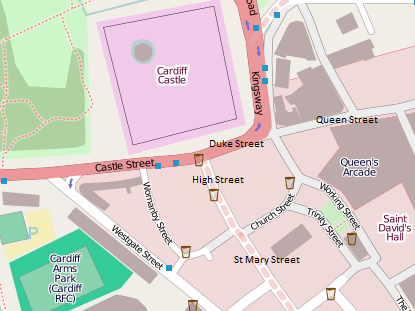
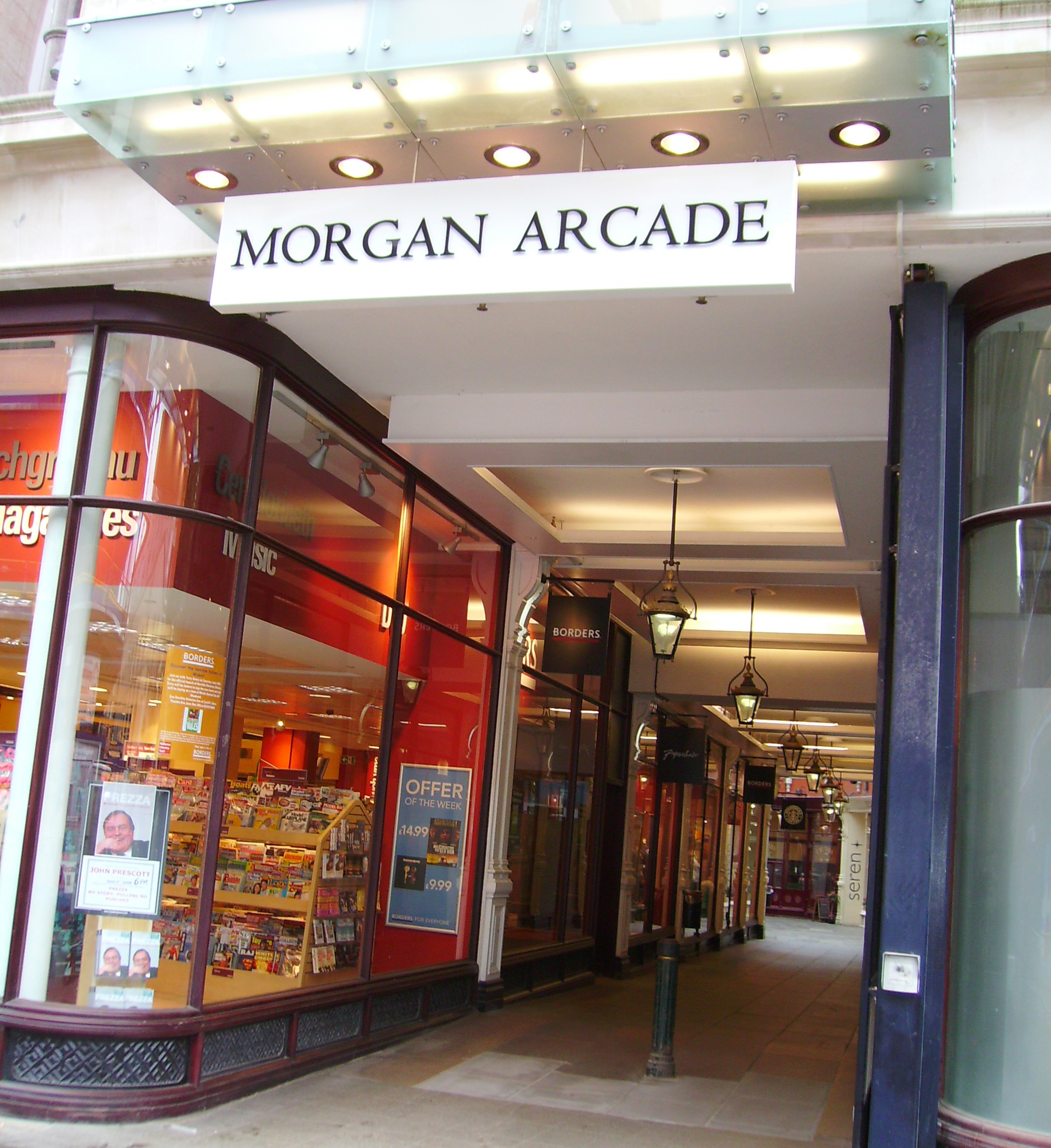
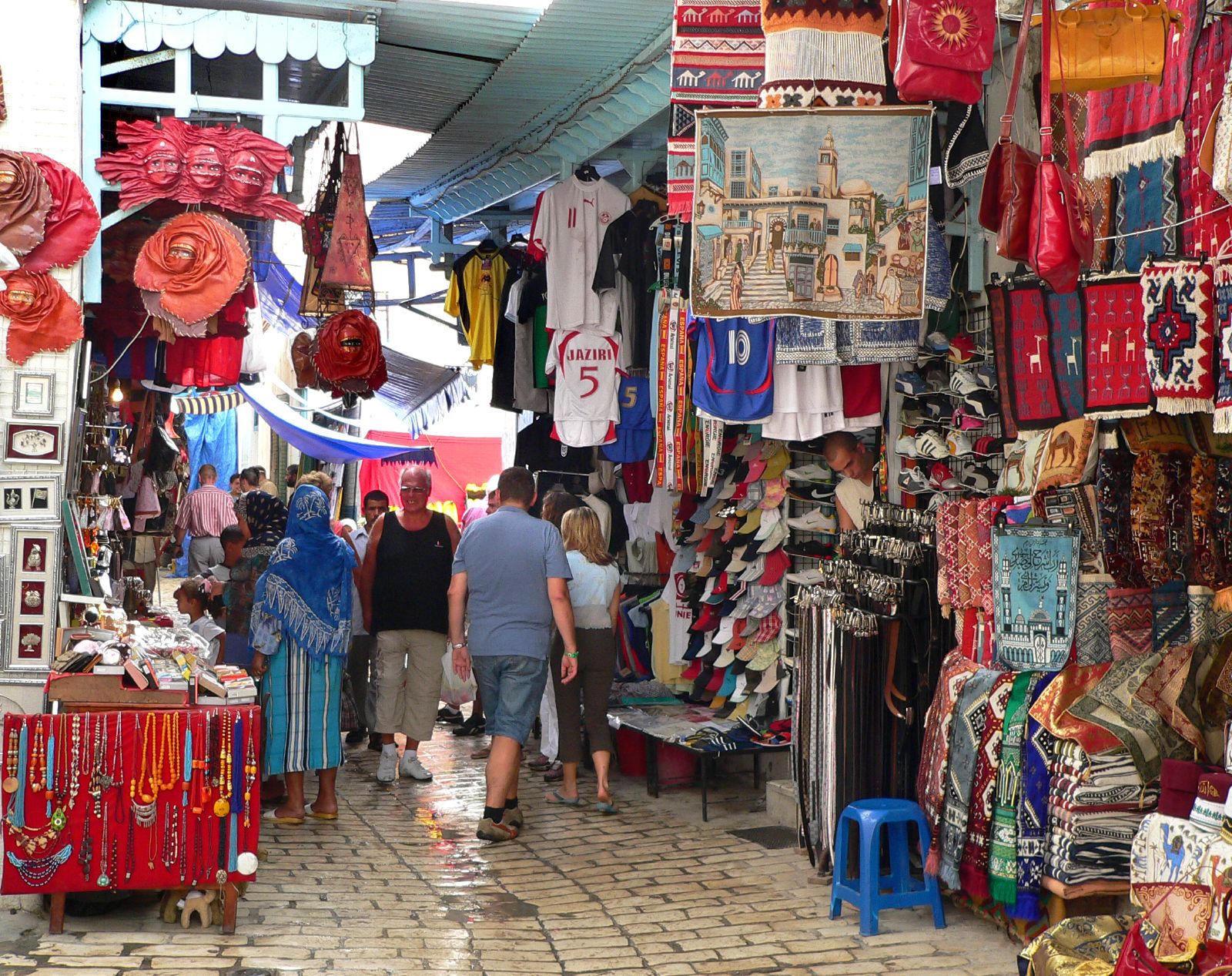

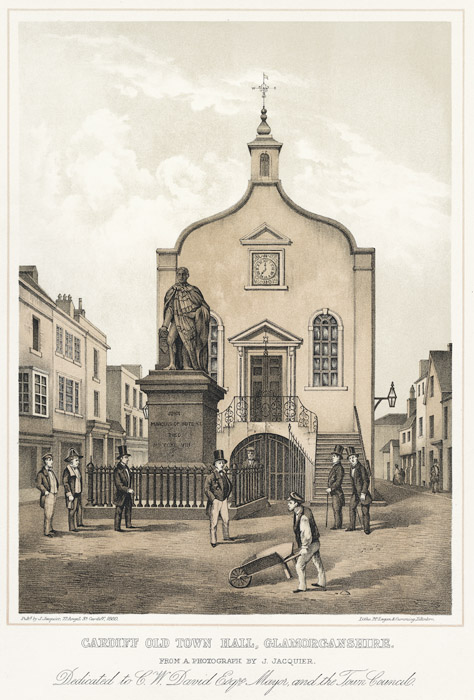
.jpg)

